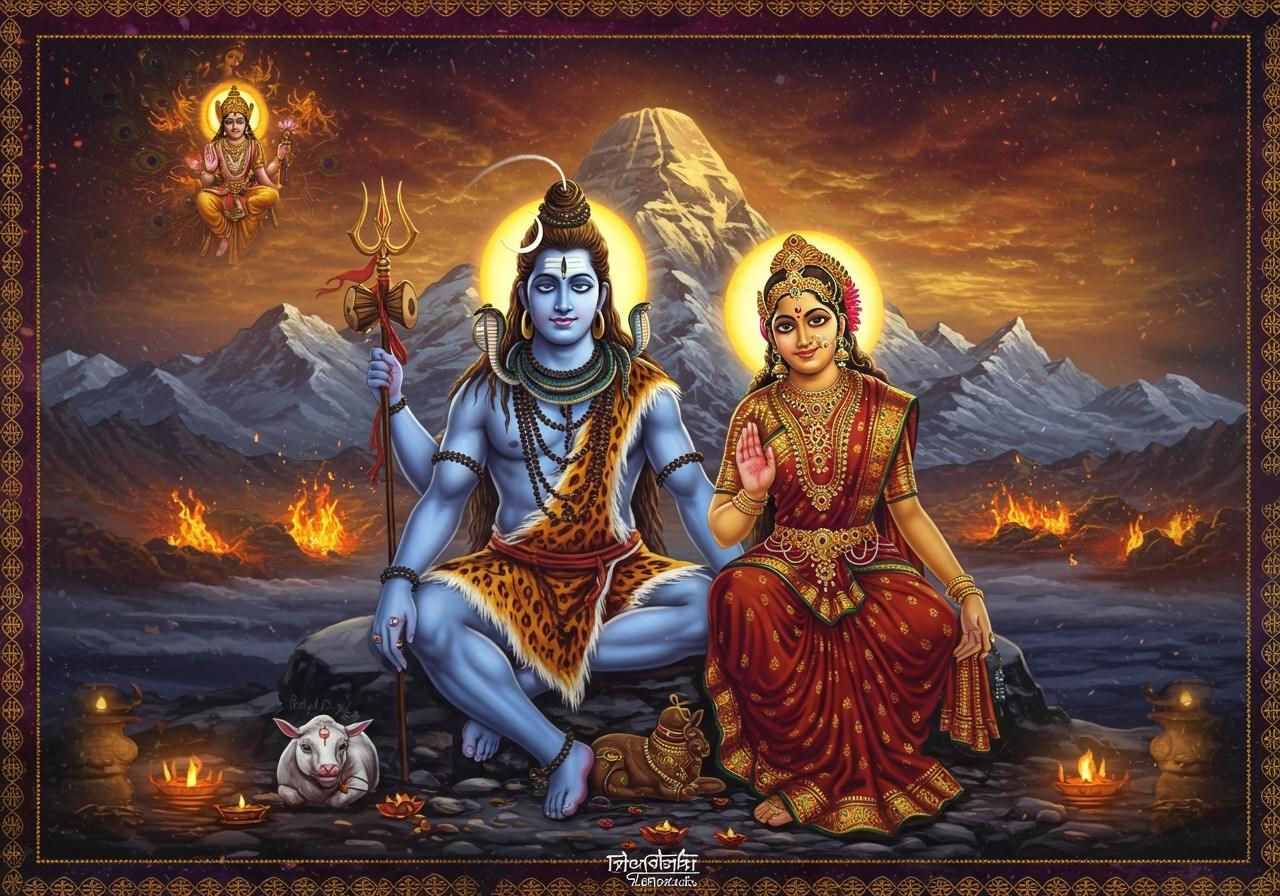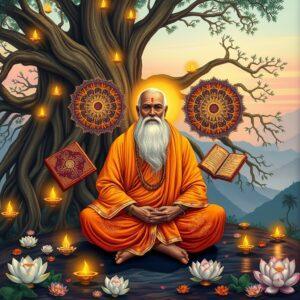
Kumarasambhava, authored by the celebrated Sanskrit poet Kalidasa, is a cornerstone of classical Sanskrit literature. This epic poem, meaning “The Birth of Kumara,” narrates the tale of Lord Kartikeya’s birth, the offspring of Shiva and Parvati. This exploration delves into the poem’s profound meanings, enduring significance, and intricate literary artistry.
Historical and Cultural Context
Background of Kumarasambhava
Kalidasa, a luminary of Sanskrit poetry, composed Kumarasambhava during the Gupta period (circa 4th-6th century CE), a golden age of Indian culture. This era witnessed remarkable advancements in art, literature, and philosophy. Set in ancient India, the poem vividly portrays the socio-religious landscape of the time.
Influence of Hindu Mythology
The narrative revolves around divine figures like Shiva, Parvati, and their son, Kartikeya. Hindu mythology deeply permeates the poem, highlighting its cultural importance within Indian literature. Its lasting influence is evident in numerous subsequent literary and artistic works.
Impact on Indian Rituals and Traditions
Kumarasambhava has profoundly impacted Indian rituals, particularly those related to Kartikeya worship. Many traditions and festivals draw inspiration from the poem’s themes. Understanding its context enriches one’s appreciation of these customs.
Kumarasambhava: Meaning and Themes
Primary Theme: Divine Love
The central theme of Kumarasambhava is the divine love between Shiva and Parvati, culminating in the birth of Kartikeya, also known as Kumara. This union symbolizes the potent force of love and devotion, essential for cosmic balance and the birth of a divine warrior to vanquish evil.
Secondary Themes
-
Asceticism: Parvati’s arduous penance (tapasya) to win Shiva’s affection underscores the virtues of dedication, perseverance, and spiritual discipline, highlighting the lengths one might go to for true love.
-
Triumph of Good Over Evil: Kartikeya’s eventual victory over the demon Tarakasura epitomizes the triumph of righteousness over malevolence, underscoring the poem’s spiritual message.
Symbolic Meanings
The characters and events are imbued with symbolic meanings. Parvati’s penance embodies perseverance, while Shiva’s meditation represents spiritual concentration. The evocative depiction of nature adds layers of meaning to the narrative, reflecting the interconnectedness of the divine and the natural world.
Philosophical Underpinnings
Kumarasambhava explores profound philosophical concepts like dharma (duty) and karma (action), delving into the complexities of human emotions, the connection between mortals and the divine, and the intricate workings of the cosmic order.
Literary Analysis of Kumarasambhava
Structure and Style
Kalidasa’s masterful use of classical Sanskrit and poetic devices elevates Kumarasambhava to a literary masterpiece. The poem is primarily composed of shlokas (verses) with a rhythmic quality that enhances its aesthetic appeal.
Vivid Imagery
Descriptive passages bring the narrative to life, immersing the reader in the story’s world. Kalidasa’s skillful character development and dialogues inject drama and emotional depth into the poem.
Poetic Devices
Kalidasa employs a rich tapestry of metaphors, similes, and other rhetorical devices to enhance the poem’s depth and artistry. These elements contribute to its enduring appeal and timeless quality.
How Poojn.in Enriches Your Spiritual Journey with Kumarasambhava
Poojn.in offers a wide selection of items ideal for rituals and ceremonies honoring Lord Shiva and Parvati, the central deities of Kumarasambhava. Our authentic collection includes:
-
Pure copper and brass puja items: Perfect for daily worship and maintaining a sacred atmosphere in your home. Browse our collection at www.poojn.in.
-
Traditional dhoop and agarbatti: Enhance your sacred ceremonies with the fragrant offerings of traditional incense. Find a variety at www.poojn.in.
-
Specially curated puja samagri sets for Shiva worship: Everything you need for a complete and reverent Shiva puja, conveniently packaged. Explore our sets at www.poojn.in.
We ensure all items adhere to traditional specifications and are sourced from reputable manufacturers. Visit www.poojn.in for our full range.
Conclusion: Embracing the Legacy of Kumarasambhava
Kumarasambhava transcends mere poetry; it is a timeless treasure embodying the essence of Indian culture and spirituality. Its exploration of divine love, unwavering dedication, and the ultimate triumph of good over evil imparts valuable lessons that resonate even today. Kalidasa’s masterful command of language and poetic devices ensures this epic continues to captivate and inspire across generations.
Understanding Kumarasambhava: FAQs
What does Kumarasambhava mean? Kumarasambhava translates to “The Birth of Kumara,” referring to Lord Kartikeya.
Who authored Kumarasambhava? The renowned Sanskrit poet Kalidasa composed this epic poem.
What is the central theme? The divine union of Shiva and Parvati, leading to Kartikeya’s birth, forms the central theme, highlighting the importance of divine love and the cosmic balance it creates.
How many cantos does it have? Traditionally, the first eight of the seventeen cantos are attributed to Kalidasa, narrating the core story of Shiva and Parvati’s union and Kartikeya’s birth.
What is its literary style? Kumarasambhava is characterized by a rich, descriptive, and ornate style, employing elaborate metaphors and vivid imagery.


